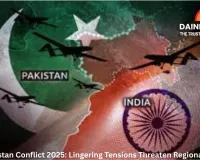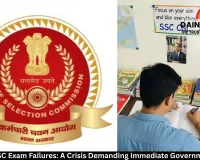Kerala's Historic Victory Against Extreme Poverty: A Blueprint for India's Social Revolution
Digital Desk
.jpg)
Kerala becomes India's first state to eradicate extreme poverty through innovative governance model. Discover how 64,006 families were lifted through customized interventions and what other states can learn.
Why Kerala's Poverty Eradication Is More Than Just a Numbers Game—It's a Governance Revolution
On November 1, 2025, Kerala marked a watershed moment in India's social development narrative. Chief Minister Pinarayi Vijayan announced that Kerala has become the first Indian state in the nation to successfully eradicate extreme poverty, a milestone that transcends mere statistical achievement and represents a fundamental reimagining of how governments can deliver welfare to their most vulnerable citizens. This declaration, made on Kerala Piravi Day celebrating the state's 69th formation, signals not just the end of a campaign but the beginning of a new paradigm for inclusive governance across India.
Yet here's the uncomfortable truth that needs to be spoken aloud: while Kerala celebrates this landmark achievement, the rest of India continues to grapple with extreme poverty affecting millions. According to NITI Aayog's 2023 multidimensional poverty index, Kerala's poverty rate stands at just 0.48 percent—an extraordinary contrast to the national average of 11.28 percent. This disparity isn't accidental. It's the result of deliberate policy choices, political consensus, and a willingness to invest in human beings rather than mere infrastructure.
The Scale of Kerala's Commitment
The numbers tell a story of unprecedented commitment. Kerala's government identified 64,006 families comprising 103,099 individuals living in extreme poverty through a meticulous, state-wide participatory process. What followed wasn't a cookie-cutter welfare scheme but 64,006 customized interventions—one for every family. The state invested over ₹1,000 crore in this endeavor, with sustained budget allocations of ₹50 crore each for 2023-24 and 2024-25, plus ₹60 crore for 2025-26.
This isn't theoretical compassion. The results are tangible. More than 5,400 new homes were built or remain under construction. An additional 5,522 homes were repaired. Critically, 2,713 landless families received land to build their residences—a revolutionary concept in a nation where land remains the most contested resource. Over 21,263 people received essential government documents like ration cards and Aadhaar for the first time, finally gaining a foothold in the formal system that had systematically excluded them.
Beyond Income: Redefining Poverty Itself
Here's what distinguishes Kerala's approach from the conventional poverty-reduction playbook used across India. Most governments fixate on income thresholds—meet the dollar-per-day benchmark and you're categorized as "out of poverty." Kerala rejected this reductive framework. The state recognized that extreme poverty is multidimensional, encompassing deprivation across food security, healthcare access, education, sanitation, and housing. This sophisticated understanding reflects the human capability approach championed by Nobel laureate Amartya Sen, which views poverty not as mere lack of money but as absence of freedom and opportunity.
When Kerala's government drew up micro-plans for each family, they didn't ask "How do we give this person more income?" Instead, they asked "What does this specific family lack that prevents them from living with dignity?" For some, it was daily food. For others, it was healthcare access or housing. For still others, it was the absence of formal identity documents that locked them out of all government assistance. This granular understanding transformed welfare from a one-size-fits-all program into precision-guided social intervention.
The Decentralization Secret
The machinery that made this possible is often overlooked: decentralized governance. Since the 1990s, Kerala empowered its panchayats and municipalities not merely as administrative units but as genuine decision-making bodies. Over 14 lakh people—from Kudumbashree workers to ASHA health volunteers to local government representatives—were engaged in identifying the state's poorest families. This wasn't top-down bureaucratic categorization but bottom-up community knowledge.
Local self-government institutions then designed interventions tailored to their communities' needs, monitoring progress through digital management information systems that tracked whether each family's deprivation was being addressed. The Kudumbashree network, comprising over 45 lakh women organized into self-help groups, emerged as both community monitors and service providers. This democratization of welfare delivery transformed what could have been an alienating process into one of community accountability and collective ownership.
The Political Consensus That Sustained Success
Here's something that deserves recognition but often doesn't receive it: political consensus on welfare in Kerala transcends party lines. Local Self-Government Minister M.B. Rajesh explicitly noted that the achievement resulted from "coordinated efforts that transcended political boundaries, with participation from local bodies under both the LDF and UDF administrations". This stands in stark contrast to most Indian states, where welfare programs become political footballs, disrupted or abandoned with each change in government.
When the Left Democratic Front won the 2021 elections, they made extreme poverty eradication a first cabinet decision, not an afterthought. This wasn't mere electoral promise-keeping; it reflected a genuine philosophical commitment to human development that Kerala's political class has maintained through multiple governments. Successive administrations, regardless of party, have reinforced this commitment through consistent budget allocations and policy continuity. This stability enables the long-term planning essential for poverty eradication.
Kerala's Integration of Flagship Programs
Kerala's success wasn't achieved through a single program but through coordinated deployment of flagship initiatives. The Life Mission provided housing for the homeless and landless. Ardram Mission ensured primary healthcare access. The Public Education Rejuvenation Program achieved near-universal school enrollment. Kudumbashree generated livelihood opportunities through women's self-help groups. Each initiative addressed a specific dimension of deprivation, and together they created a comprehensive safety net.
This integration avoided the fragmentation that characterizes poverty-reduction efforts in many Indian states, where health programs operate independently of education initiatives, which function separately from livelihood schemes. In Kerala, these programs reinforced each other, recognizing that a child cannot concentrate in school without adequate nutrition, that healthcare cannot improve without sanitation infrastructure, that employment requires both education and health.
The Uncomfortable Challenges Ahead
Yet beneath Kerala's celebration lies a troubling undercurrent. The state faces what economists call "the challenge of sustainable development within democratic constraints." Youth unemployment remains stubbornly high at approximately 15 percent—a figure that suggests the state's success in eradicating extreme poverty masks ongoing structural economic challenges. Young Keralites remain unable to find meaningful employment in adequate numbers, creating a gap between eradication of absolute deprivation and creation of genuine economic opportunity.
Fiscal sustainability presents another looming concern. Kerala's extensive welfare spending, while morally justified, has created budgetary pressures. In a federal system where states depend on shared revenues, maintaining welfare commitments while addressing infrastructure needs and economic growth becomes an increasingly complex balancing act. The state's aging population, a consequence of its success in healthcare and education, will require innovative approaches to social security that extend beyond current welfare frameworks.
Additionally, the distinction between "extreme poverty" and "relative poverty" matters profoundly. While Kerala has eradicated extreme poverty—absolute deprivation—relative poverty persists. Inequality, though lower than in most Indian states, continues to generate social tensions and limits genuine freedom for substantial segments of the population.
What India Must Learn From Kerala
Kerala's achievement should not be understood as merely a feel-good story of a single state's success. It's a powerful indictment of what remains possible across India if political will, intellectual resources, and financial commitment align. That over 15 percent of India's population lives in multidimensional poverty while Kerala achieves 0.48 percent is both a critique and a challenge.
The Kerala model demonstrates that extreme poverty eradication is not a matter of resource constraint but of political priority and policy design. India spends substantial sums on welfare programs, yet their fragmentation and top-down delivery often limit effectiveness. Kerala shows that decentralized governance, where local communities participate in identifying needs and monitoring implementation, generates superior outcomes. It proves that multidimensional frameworks produce better results than income-focused metrics. It validates that political consensus on welfare across parties creates sustainability that electoral cycles alone cannot provide.
Moreover, Kerala's integration of gender through Kudumbashree highlights the importance of recognizing women not as passive beneficiaries but as agents of economic and social change. This empowerment generates social cohesion and economic resilience that individualized welfare cannot achieve.
The Path Forward
Kerala's extreme poverty eradication represents a historic milestone, but it's not an endpoint. The state must now tackle youth unemployment through skill development and entrepreneurship support. It must enhance fiscal sustainability through economic growth and innovation. It must address relative poverty and inequality to ensure that freedom from absolute deprivation translates into genuine human capability and opportunity.
For other Indian states, Kerala offers both inspiration and practical lessons. The detailed survey methodology, the customized intervention framework, the decentralized governance structure, and the political consensus-building can all be adapted to different contexts. States need not replicate Kerala's approach exactly; rather, they should understand its core principle: that poverty eradication requires treating poor families not as statistics but as individuals with specific needs and capacities, supported through accountable local institutions operating within a coordinated policy framework.
As India progresses toward its sustainable development goals, Kerala's achievement stands as a beacon. It demonstrates that inclusive development is achievable, that decentralized democracy can deliver results, and that political commitment to human dignity generates measurable outcomes. The question now is whether other states will embrace this lesson or continue with fragmented, top-down approaches that perpetuate deprivation despite substantial public expenditure.
Kerala's victory is India's mirror. What the nation chooses to do with this reflection will determine whether this singular achievement becomes a model for transformation or remains an isolated success in a landscape of persistent poverty.





.jpg)

.jpg)

.jpg)
